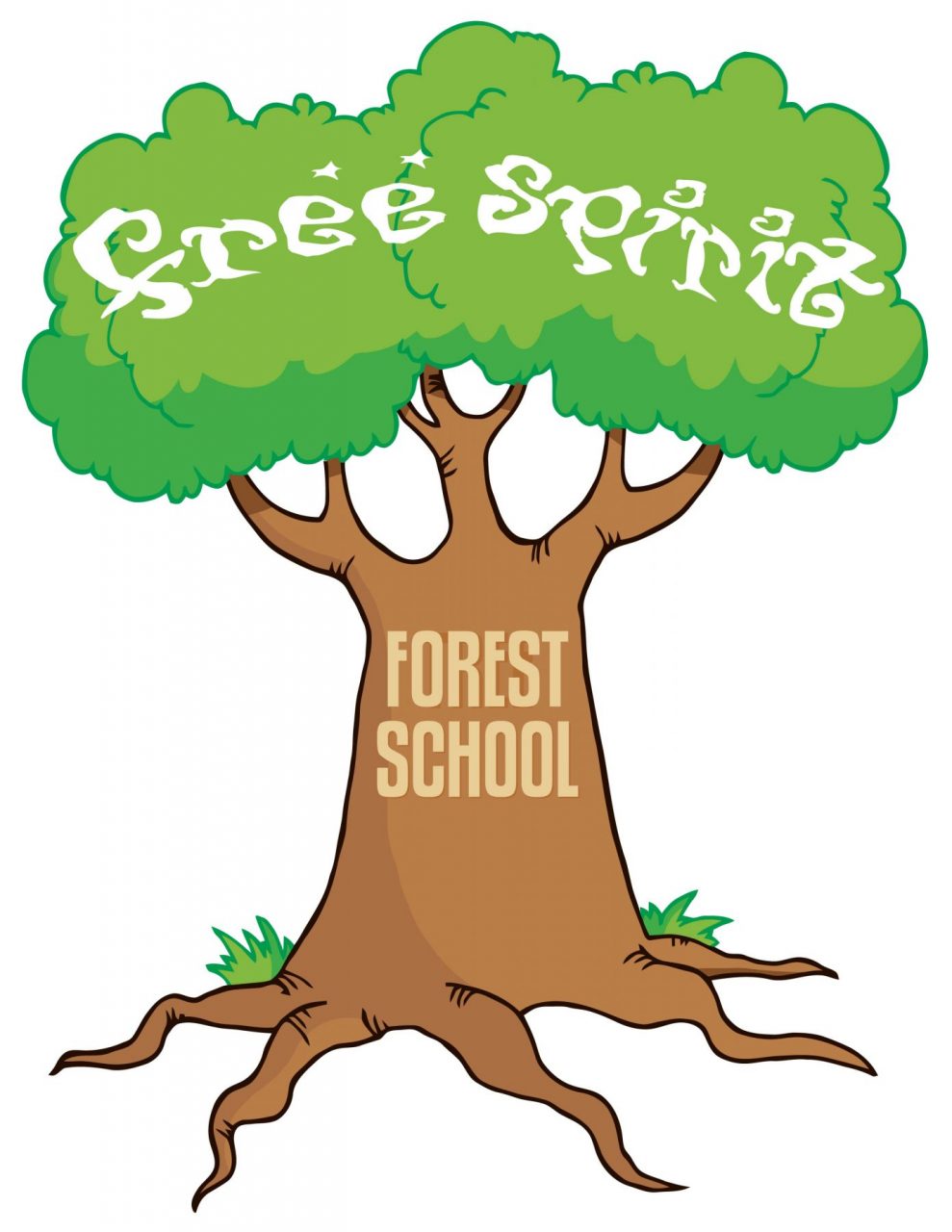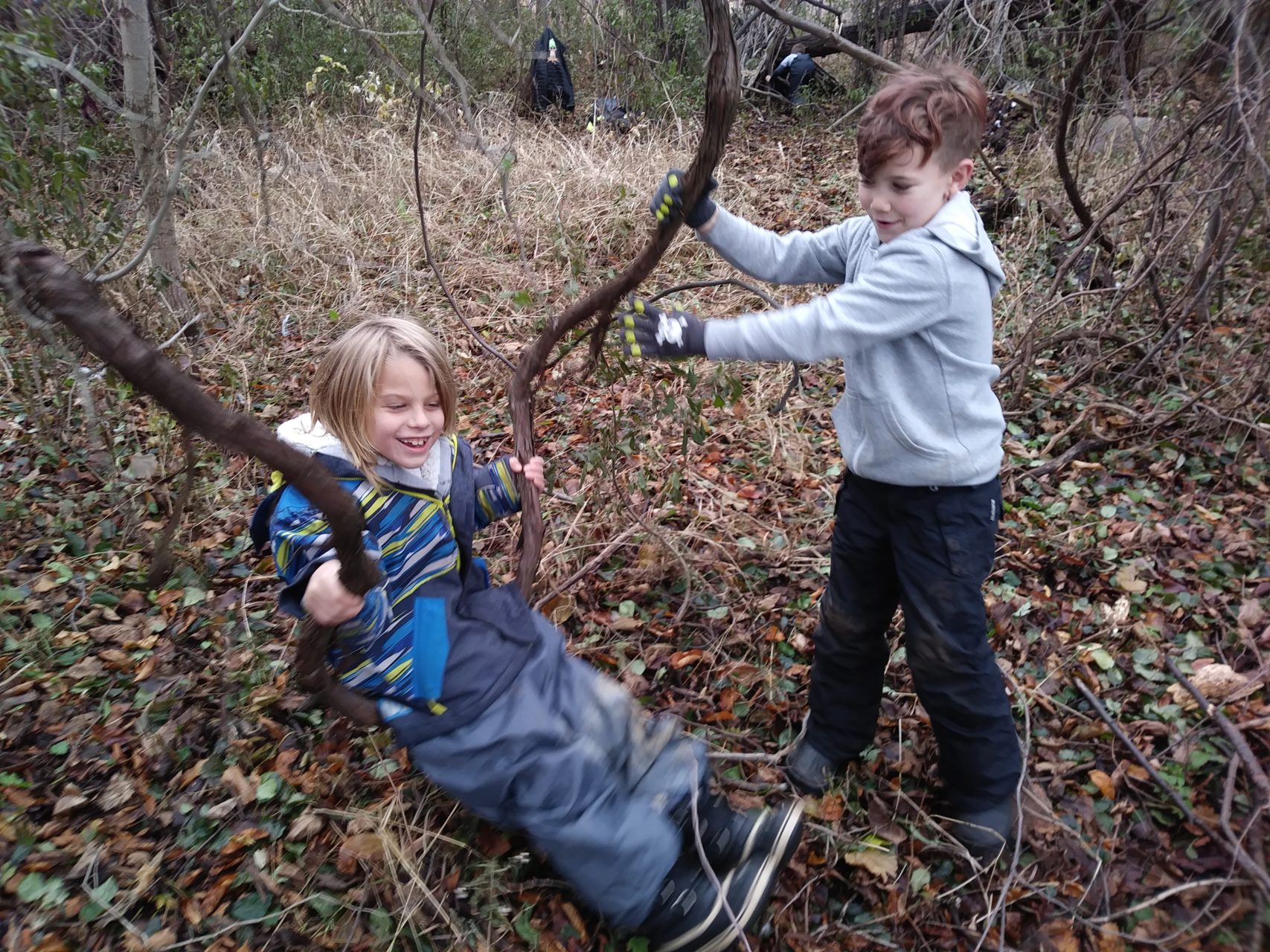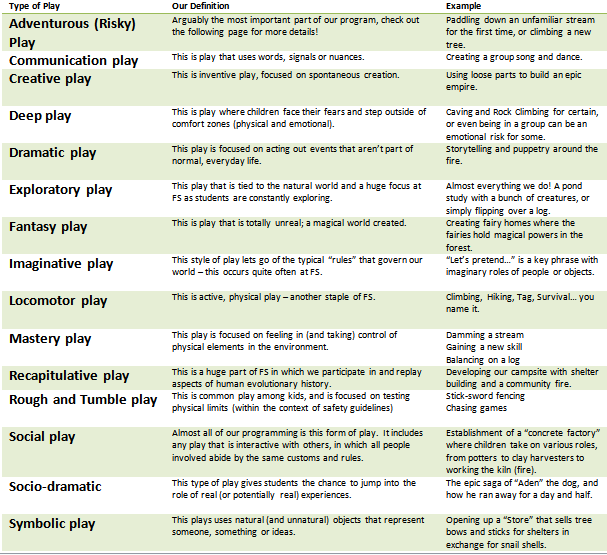At Free Spirit Forest Nature School we have the opportunity to spend time with your children as they explore the natural world around them each day. It’s truly amazing to see where and how they take new opportunities. In fact, play is arguably the most important part of our Forest and Nature School and the current social trend is recognizing its importance in whole child-development. In his book, Children and Nature Design Principles for Educators (2008), David Sobel identified 7 play motifs for children:
Going on adventures
Fantasies and imagination
Shaping small worlds
Developing friendships with animals
Maps and Paths (discovering local geography)
Creating special places (forts, tree houses, etc)
Playing hunting and gathering games
He argues that by simply observing children at play in a woodsy, forested area you will see some form of all these motifs unfold. In our own practice and experience at FNS, we see this everyday and believe that it’s universal among children.
Understanding our role as educators, we know our job at FSFNS is to follow the children’s lead and extend their ideas when possible. We know that play is valuable in and of itself, but it’s also a marvelous vehicle for learning! Play theorist Bob Hughes (2002) said, “Play is a biological necessity that puts the child in the driving seat.” And we couldn’t agree more. He created a taxonomy for play and identified around 15 different types (Hughes, 2002). Below are some real examples from our school:
And now for an anecdote!
One day during our unstructured time, students had the opportunity to engage with whatever they were called to – some were drawn to symbolic play through loo se parts; some wanted to do cartwheels for miles and swing in trees (locomotor play); while others were taken to whittling and other types of deep or risky play.
se parts; some wanted to do cartwheels for miles and swing in trees (locomotor play); while others were taken to whittling and other types of deep or risky play.
A few students were drawn to the idea of recapitulative play – diving into survival mode by creating things from nearby wild edibles (like tea) just like “they did in the olden days”. They foraged and harvested plants independently using previous FNS knowledge and began to set up a School Store, a brilliant form of socio-dramatic play!
Realizing the need more inventory, the students came to us asking, “What else can we sell?” Instead of “adultifying” or interfering with their play by giving them our own ideas, we opted to equip them with a Herbal Book of Natural Recipes to help keep them driven by their o wn interests! So, book in hand, they took to the forest! Students came back with all sorts of properly foraged treasures and were ready to make some extensions to their products! Our personal favourites – miniature medicine bags wrapped in Lamb’s Ear, a wider variety of herbal teas, and even a diluted sage concoction to make a “local organic mouthwash!”
wn interests! So, book in hand, they took to the forest! Students came back with all sorts of properly foraged treasures and were ready to make some extensions to their products! Our personal favourites – miniature medicine bags wrapped in Lamb’s Ear, a wider variety of herbal teas, and even a diluted sage concoction to make a “local organic mouthwash!”
Attention grew and soon more students became involved in the play, earning themselves various roles (merchants, gatherers, shareholders, patrons and more). “I’d like to by something,” someone asked. “Oh! How can people pay us?” And almost immediately, they established an organized symbolic play system for payment – wood chips, old snail shells, small rocks, and even blades of grass! The next thing we knew, students were selling, trading, sharing,  and bartering all sorts of natural treasures!
and bartering all sorts of natural treasures!
The busy market lasted for a long while, as students began to share their recipes and secrets to making these innovative creations. And while we adults were engaged in the play as customers, we were able to take a back seat in the child-led play and be a part of their experience. And since that day, the market has been revisited on several occasions.
Play Everyday!
And now for a couple sources:
Hughes, B., 2002. A Playworker’s Taxonomy of Play Types, 2nd edition. London: PlayLink.
Sobel, David, 2008. Children and Nature: Design Principles for Educators. Stenhouse Publishers.


